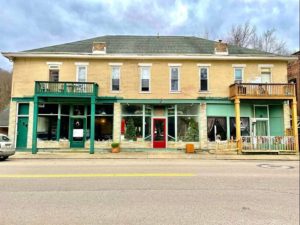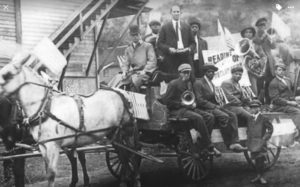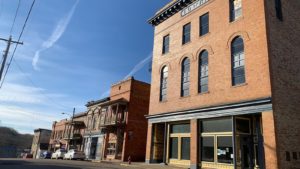The decade of the 1920s was a tumultuous one for the Little Cities Region in many ways, and it will be the focus of our Little Cities of Black Diamonds Festival this year. As the decade arrived, World War I had just concluded and the mines of our region were still active at a steady pace. By the last few years of the decade, though, things had changed for the worse. In short, union dysfunction and tension with the mine owners led to many mines closing for good as the owners shifted focus to West Virginia and Kentucky more than ever. The end of mining and industries like railroading that the mines depended upon, that provided the primary source of income in the region was drawing to a close.
Our digital archive that has been compiled over the years has several newspaper clippings, photos, and accounts that help us understand our past, however, the history of the region is extraordinarily complex. As much as we collect and read, there is always more to learn and uncover. Researching via several online databases and archival scans, we have learned more about the social, cultural, racial, and economic histories of the Little Cities Region that we ever knew before.
Reading newspaper clippings of the 1920s regarding the slow demise of the coal mining scene due to the union disagreements and lack of unification is emotionally captivating, yet somber. The desperation of the miners in the region can be felt as the writing was written on the walls for the mine owners to move south to the non-unionized coalfields. Railroading jobs (of which over 500 were employed at the Logan Yard of the Hocking Valley Railway alone, soon to be under Chesapeake & Ohio control by 1930 when the yard shuttered), once long thought to be secure, were now in danger along with the mine jobs. A general feeling of uneasiness in regional papers articles brings emotion to us in the twenty-first century.
Last fall, a few LCBD Council members attended a lecture at the Southeast Ohio History Center in Athens conducted by Dr. William Trollinger of the University of Dayton. Dr. Trollinger is one of the foremost researchers on Ku Klux Klan history in Ohio. One may be surprised that the KKK had more members in Ohio during the 1920’s decade than any other state. Much of this, as Trollinger mentioned, was spurred on by the 1915 film, Birth of a Nation. The organization primarily targeted Catholics in Ohio, as Cheryl Blosser had discovered through a variety of accounts she came across in our region prior to Trollinger’s visit to the History Center. The tension between Catholic community members and Klan groups, especially in Shawnee, provided a fascinating look at how the coal communities over time silenced the organization by showing no fear toward them. Researching newspaper clippings and other accounts we came across unveiled the division of newspaper publishers on the topic. Some seemed to support the Klan activities and presence, while others backed the local Catholics and community members who supported them.
From researching the decline of the coal and industrial presence in our region, and the cultural tension created by the presence of Klan groups, a general sense of the social landscape of the decade began to be unveiled to us. Overwhelmingly, community members were galvanized together in unity over their disdain for the infamous Klansmen. While this brought people together for a cause, so too did the unification of miners to attempt to save their industrial employment opportunities in the region. Miners and their families knew if the owners moved to the coalfields south of the Ohio River, they too would need to move to survive. The galvanization of the folks in our region socially and economically brought them closer together, yet, ultimately, the majority of the families had to move on from the Hocking Valley by the dawn of the 1930’s decade. This unique opportunity of bringing our supporters and fellow residents of the region and state this special week of digital content on the week of October 5th has allowed us to understand our region’s history better than ever before.



